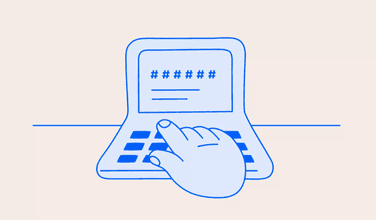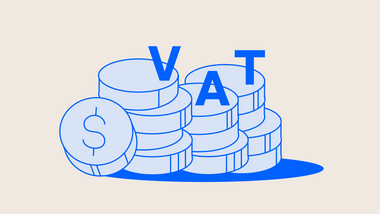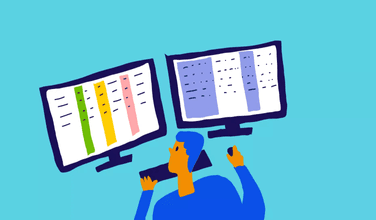Creating an Invoice: A How-To Guide
An invoice is a document sent out by a business as proof of a transaction and to ask for payment for a service or product provided. Knowing how to create them and what to include will help save you time and confusion when billing clients for your work.
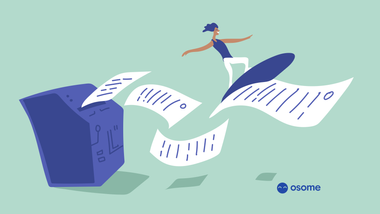
So, you’ve just launched your own small business and looking for advice on how to make an invoice? Then you’ve come to the right place. Knowing how to create simple invoices in the UK, and getting up to speed with what needs to be included in it will help save time and confusion when billing clients for your work.
What Is an Invoice?
An invoice, sometimes also known as a bill or sales invoice, is a document sent out by a business as proof of a transaction and to ask for payment for a service or product provided.
Making An Invoice: What To Include?
Invoice Number
Let’s start with understanding exactly what an invoice number means and why it’s so important to get it right from the word go. Invoice numbers form a crucial part of bookkeeping and accounting records for your UK business. Establish a simple numbering system, then assign every invoice a unique invoice number to keep track of them as time goes on.
It’s not only important when it comes to tax season. Knowing how to create an invoice also makes things a lot more straightforward if you need to chat confidently about a particular invoice with a client or find it quickly. Name and save them in a way that helps you search and locate them easily, no matter where they’re stored, for example:
- Invoice number: 2982; 2983; 2984 (sequential & purely numerical)
- Invoice number: INV02982; INV02983; INV02984 (sequential with letters)
- Invoice number: LDN02982; SG02983, HK2984 (district or location related)
- Invoice number: FullValet02982; DeepClean2983, Vacuum2984 (service-specific)
Company Name
This is your most unique identifier and one of the most important elements in the first steps when making an invoice. These professional details reflect who you are and validate your brand that’s sending this official instruction to pay.
Invoice Date
When you issue an invoice, you need to include the date and terms of payment, so your customers know exactly when it was created, along with how long they have to contractually fulfil the amount due. These “payment terms” or “terms of payment” are the dates by which the payment should ideally be made, or the period of time it is expected (or both). Sometimes these are agreed upon upfront, but they can be specified on an invoice-by-invoice basis.
Postal Information & Address
Another important aspect of knowing how to create an invoice comes down to adding both you and your client’s details. Everything down to postcodes can be included. Other contact details like landline, and a mobile number can also be mentioned if you think they’ll be helpful.
Include a “Bill to” section. In there, include the same details you know to be important or necessary about the client you’re sending your invoice to. Nothing more (we don’t need to be creepy), nothing less (save your clients’ time by including all the information required for them to pay you).
Goods Or Services (Listed) & What You Charge
One of the most important aspects when learning how to create an invoice that’ll help your company get paid on time and on the right terms is to use neat line items — they’re the best format for this section. Numbered or bulleted if they’re a little more complex or if you know that it’s important to unpack details where necessary.
Add item codes, SKU codes and model numbers if necessary. Include the price and quantity of units, like the number of hours (although this is up to you and your contract). A few more pointers for this section are to detail the VAT sum if it applies, along with any pre-agreed discounts and, of course, the overall total due.
Examples:
Selling products:
| DESCRIPTION | MAN HOURS | PER HOUR COST | DISCOUNT % | VAT % | EXCL. TOTAL | TOTAL INCL. |
|---|---|---|---|---|---|---|
| Customised rainbow bowls | 2 | 70 | Loyalty customer -25% | 10% | 105 | 94.5 |
| Water & Nibble combo | 1 | 55 | N/A | 10% | 49.5 | 49.5 |
Selling services:
| DESCRIPTION | MAN HOURS | PER HOUR COST | DISCOUNT % | VAT % | EXCL. TOTAL | TOTAL INCL. |
|---|---|---|---|---|---|---|
| 5th birthday party (live entertainment) | 3.5 | 40 p/h | N/A | N/A | 105 | 94.5 |
| 5th birthday party (props, prizes) | Prizes: x3 Balloons: x20 |
Prizes: 3.5 Balloons: 0.75 |
Balloons: Buy 20, get 10% | N/A | 16 | 16 |
Payment Terms
Small businesses typically adopt one of three types of payment terms in line with common industry practices when creating an invoice. These are dependent on your cash flow needs and your client relationships:
- Net (N): Net 10' implies that the full payment amount is due within ten days, while 'Net 30' means 30 days after the invoice date. 'Net' can also be abbreviated to 'N', so N10 or N30 would appear on the invoice.
- Payment in advance (PIA): Working with new clients or clients with late payment history? Payment in advance (PIA) may be a good approach because, under this payment term, clients must make full payments before goods or services are received.
- End of Month (EOM): This means the full payment owed has to be made within the number of days stated after the invoice issuance month-end. Your invoice can be written as 'Payment due 30 days month-end' or abbreviated to 'Net EOM 30'. For instance, if your invoice was dated 7 March and your payment terms were 'Payment due 30 days month-end', you should expect the full payment by 30 April.
- Month following invoice (MFI): If you are expecting the full amount to be made on the first 15th of the month upon invoice issuance, your payment term can be abbreviated to '15 MFI'. For instance, if your invoice date was 7 February with the payment term 15 MFI, the payment would be due on 15 February. However, if the same invoice was dated 16 February, then the payment would only be due on the 15th of the following month, which is 15 March.
Take measures to bridge your cash flow gap on every invoice you create by briefly outlining payment terms and late fee policies (if you intend to bill clients for late payment). Detail your accepted payment methods, which could include a combo of the following:
- Cash
- Credit card
- Online payments
- Bank transfer
- Mobile payments
- Recurring payments
Discounts
If your relationship with your client is long-standing, you may want to offer a goodwill discount. This discount should be included within the invoice and can be an actual amount or a percentage.
Value-Added Tax (VAT)
If your company is VAT-registered, you must issue a VAT invoice for standard-rated supplies. For most transactions, you're required to use a full VAT invoice. You can use a modified invoice for retail supplies over £250, and for those under £250, you can use a simplified invoice.
These are exceptions when you do not need to issue a VAT invoice:
- Your invoice is solely for exempt or zero-rated sales within the United Kingdom
- You are gifting the goods
- Your customer has set up a self-billing arrangement
- Your goods are sold under a VAT second-hand margin scheme
Amount Due & Due Date
Including the due date on your invoice is a professional and tactful way to let clients know when to pay. State the total amount due (including any applicable taxes) and the payment due date at the footer when creating an invoice. You can make it easier to spot by using a different font colour or bolding the text. Be clear and specific about your payment deadline, e.g. "Payment due November 14, 2020". You can also set up payment reminders to ensure clients make timely payments.
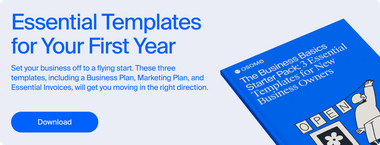
Six Tips To Improve Your Invoicing
Make the time
Prioritise, don't procrastinate. Book time in your calendar and treat the time you spend creating an invoice as you would any normal client meeting. Set up a process (automated or manual) to complement the structure of your operations, whether it's a dedicated day per month or a weekly time slot.
Make it clear
When you make an invoice, include all the necessary details and related information to ensure your invoice leaves no room for confusion.
- An identifiable & trackable invoice number
- Contact details (yours & theirs)
- An itemised list of goods/services & their costs
- Date & terms of payment
Make it easy
Different clients, suppliers and companies may have different ways of working or processes that streamline their payments. Check if those systems affect you, whether it's prerequisite vendor registration or compliance forms, so your invoice-making process is primed to enable them to pay easily.
Make it simple
Make your payment methods easy so the money owed to you can get to you fast, safely and with minimal fees or transfer charges. Online payment platforms could be a good route for ecommerce SMEs. Consider what payment transfer method suits your business by asking the experts for advice.
Make It Smart
There are loads of templates online, including ones easy to search on programmes like Microsoft Word or Google Docs. To go a step further for customisation, some services make designing and generating invoices easy and personal. Finally, follow the regulations and keep a record.
Make It Top-of-mind
Your invoice is your responsibility. Manage communication and keep it top-of-mind if there are unusual delays (even the best-intended inbox gets clogged up sometimes). Reach out respectively for confirmation it's been received and processed.
What an Invoice for Ecommerce Businesses Needs To Have
What Kind Of Ecommerce Invoice Should You Prepare?
Before you issue an invoice, consider what type of business you're running; here are a few examples:
- Business to Business (B2B)
- Business to Consumer (B2C)
- Consumer to Consumer (C2C)
- Consumer to Business (C2B)
Knowing how to set out an invoice requires you to have firm and clearly stated policies in place.
- Is up-front payment required?
- Instalment payment options?
- Payment deadline?
- Any late charges?
- Types of payments accepted?
- Refund & return policies?
Speaking of refund and return policies — consider including terms and conditions when making an invoice:
- No refunds or exchanges once items are delivered successfully
- No refunds or exchanges unless the item is defective
- Partial refund for defective goods
- One-to-one exchange within seven days
- Strictly no refunds or exchanges
- "Change of mind" is not applicable as a reason for a refund or exchange
Why It's So Important To Prepare Invoices
Apart from keeping track of all items and services sold, invoices also play an essential role in your business' bookkeeping. Bookkeeping is pivotal to small businesses — having an accurate and well-maintained set of books can help your business, especially when you're just starting.
The more transactions you need to record, the more complicated your bookkeeping system will be. Nonetheless, bookkeeping is essential if you want your business to survive and thrive, despite it being a tedious activity. But don’t worry, Osome's software provides you with the services you need to keep your bookkeeping in check.
No matter where you are, talk to us if you have a business struggling with bookkeeping matters or are simply interested in how we can help you.
What Tools Can I Use To Create an Invoice?
When generating an invoice, there are a lot of options to choose from, with everything from services to invoicing software programs. Even simple tools like Google Docs or Microsoft Word can do the trick as they offer a variety of templates, so you don't have to start from scratch to create your own.
Automate your invoices and be on top of your financial data
Keeping up with the status of your payments can be draining and distract you from the core business of your company. Put your time to better use and focus on building your business - just leave the bookkeeping and accounting to us at Osome.
Tips To Run Your Business Smarter. Delivered to You Monthly
We've simplified all the long jargon into short, actionable tips. Just subscribe to our newsletter and we'll get you up to speed in no time!




